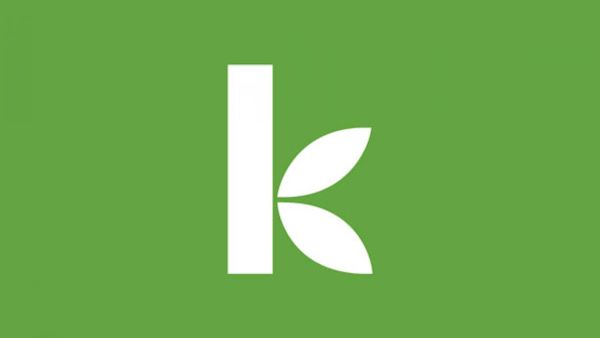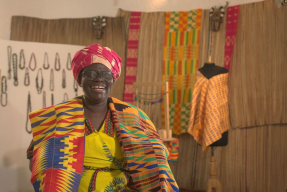Should Kiva Lenders take on currency exchange risk?
July 10, 2010
Note: This post was published in 2010 and contains outdated information. Please see this blog post or kiva.org/help.
By Rosalind Piggot, KF10, Tajikistan
Until about a month ago, I didn’t realize that currency exchange loss protection was important to Kiva Lenders. That was until Yelena (KF11, Azerbaijan) raised the issue, pointing out a discussion on kivafriends. Many lenders don’t lend via Field Partners that share currency risk. Why should Kiva Lenders take on the risk of currency loss when Kiva’s Field Partners can protect against it in other ways?
What is currency risk on Kiva?
Currency risk is embedded in the Kiva system. Currency risk occurs because many Field Partners disburse loans in local currency. However, they have to pay Kiva Lenders back in US dollars (USD). So if the local currency loses value against the US dollar, the Field Partner still has to pay back e.g. 1000 USD even if the client only pays them the equivalent of 900 USD.
To help Field Partners manage this risk, Kiva introduced an option to share the risk with Kiva Lenders. If the Field Partner selects this option, Kiva Lenders will bear the currency loss if the local currency goes down by over 20% against the USD. You can see whether currency exchange loss is covered by the Field Partner (“covered”) or not (“possible”) in an entrepreneur’s business description.
Why should Field Partners cover the risk
When I first made a loan on Kiva, currency exchange loss was important to me. I didn’t want my funds to be eroded over time. I wanted to lend to Tajikistan, and, luckily, both of Kiva’s active Tajik Field Partners, HUMO and IMON, assumed the currency risk.
Before coming to Tajikistan, I thought, “Kiva Field Partners charge interest rates, so they should bear the burden.” I figured interest rates would be designed to cover any costs due to currency losses.
Contractual obligations v breaking even
But covering currency risk through interest rates doesn’t cut it in international finance. Around 90% of Tajik micro-finance organizations’ debt in 2008 was in foreign currency, often times coming from abroad. In contracts with foreign organizations, there is usually a cap on the currency risk that the Tajik partner can take on. To stick to the contract, the Tajik organizations limit the amount of local currency loans they disburse. They disburse both local currency loans and loans denominated in USD.
New rules, and currency issues
However, the Tajik government has recently put pressure on micro-loan organizations to give only local currency loans. This might mean breaching contracts that limit currency risk exposure. If the pressure continues, Tajik micro-loan organizations will need to find alternative ways to get and manage funds to disburse to entrepreneurs.
‘Hard currency’ economy
One possible solution is finding funds in local currency. But getting access to local currency from within Tajikistan can be tricky. A lot of the money in Tajikistan is in foreign “hard currency.” People use foreign currency as a store of value because it is more stable. Around 60% of money deposited in banks (many people don’t deposit in banks at all) is in foreign currency. Also, big commercial banks (that can make loans to Kiva’s Partners) often have less than 50% of their loan portfolio in local currency.
Micro-loan organizations can also look for Tajik money from abroad. This means finding new international partners that are willing to give out money in the Tajik local currency. Although some partners are willing to do this, many are not.
Another option is hedging against currency risk. Hedging, which usually involves paying some form of ‘fee’ to get rid of risk, is also not easy. Micro-loan organizations and banks alike say there are no adapted hedging products here. Although many organizations do have a few hedges, they are not enough, expensive, and short term. You may think you are going to get a hedge, or renew it. Then, at the last minute, the other party to the deal turns and says, “Sorry, we don’t have the resources. We’ll let you know when we do.”
Everyone should share the risk … including Kiva Lenders?
With these challenges, one option proposed is for foreign partners to share the currency risk with Tajik micro-loan organizations.* Kiva offers its Field Partners this type of option through the currency exchange loss feature. With new government pressure, using Kiva’s currency risk protection seems like a reasonable solution.
However, it’s not something I would do if I was a Tajik Field Partner. Tajik loans on Kiva usually raise slowly. For many lenders, they are not as attractive as loans from other regions. Kiva Partners here worry about how many loans to post per month, in case they expire.
In light of the discussion on kivafriends.org, sharing the currency risk might make these loans even less attractive. It might solve one problem to create another.
What do you think?
If you would like to support entrepreneurs in Tajikistan, you can lend, join the team Supporters of Tajikistan, or learn more about Tajikistan from Kiva Fellow blog posts
* To be clear, this was not proposed by a micro-loan organization
PREVIOUS ARTICLE
Update: TeamKiva crosses the finish line in Los Angeles after 565 miles! →NEXT ARTICLE
Good news from Kyrgyzstan →













